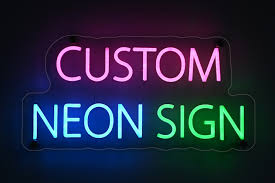Images play a crucial role in both online and offline content. Whether you’re designing a website, creating marketing materials, or preparing artwork for a gallery, the quality and format of your images can significantly impact your project’s success. However, preparing images for print versus web involves different processes and considerations. Understanding these differences is essential to ensure your images look sharp and professional, regardless of where they are displayed.
One common challenge is ensuring your images are of high enough resolution, especially when enlarging them for different uses. This is where tools like AI Image Enlarger come into play, offering a way to scale up images while maintaining quality. In this guide, we’ll explore how to prepare your images for both print and web, highlighting key differences and best practices.
Understanding the Basics: Print vs. Web
Before diving into the specifics, it’s important to understand the fundamental differences between preparing images for print and web:
- Resolution: Print images require much higher resolution than web images. This is because printed materials need to be clear and crisp, even when viewed up close, whereas web images are often viewed on screens where lower resolutions are acceptable.
- Color Mode: Print images are typically prepared in CMYK (Cyan, Magenta, Yellow, and Black) color mode, which aligns with the color mixing process in printing. Web images, on the other hand, use RGB (Red, Green, and Blue) color mode, which corresponds to how screens display colors.
- File Formats: The preferred file formats for print and web can also differ. Print often requires lossless formats like TIFF or high-resolution PDFs, while the web favors formats optimized for quick loading times, such as JPEG, PNG, or WebP.
Preparing Images for Print
When preparing images for print, there are several key factors to consider to ensure the final product looks professional.
1. Resolution and DPI
Resolution is the most critical factor when preparing images for print. The standard measurement for print resolution is DPI (Dots Per Inch). For high-quality prints, a minimum of 300 DPI is recommended. This ensures that the image will be sharp and clear when printed, without any visible pixelation.
If you start with an image that has a lower DPI, you’ll need to increase it. However, simply increasing the DPI without increasing the image’s overall size will not improve quality; in fact, it might degrade it. This is where AI image enlargers become valuable. These tools use advanced algorithms to add detail and clarity when increasing the image size, allowing for larger prints without loss of quality.
2. Color Mode: CMYK
As mentioned earlier, print materials require images in CMYK color mode. Most digital images are initially created in RGB mode, so it’s essential to convert them to CMYK before printing. Be aware that the colors might shift slightly during this conversion because CMYK has a smaller color gamut than RGB. It’s a good practice to preview your image in CMYK to make any necessary adjustments to maintain color accuracy.
3. File Format: TIFF or PDF
For print, you should save your images in a format that preserves as much detail as possible. TIFF (Tagged Image File Format) is a popular choice because it’s lossless, meaning it doesn’t compress the image and loses data. Another common format is PDF, especially when dealing with documents or multi-page prints, as it preserves vector information and text clarity.
4. Bleed and Margins
When designing for print, it’s crucial to account for bleed and margins. Bleed refers to the area of the image that extends beyond the edge of where the paper will be cut. This ensures that the image reaches the edge of the page without leaving any unwanted white borders. Typically, a bleed of 0.125 inches (3mm) is recommended. Margins, on the other hand, are the safe zones within which you should keep all essential content to avoid it being cut off.
Also, read What are the Reasons to opt for Procol
Preparing Images for Web
Preparing images for the web requires a different approach, focusing on fast loading times and compatibility across various devices.
1. Resolution and Image Size
For web images, resolution is typically measured in pixels rather than DPI. The most important consideration is the image’s pixel dimensions, which should be appropriate for its intended use. For instance, a full-width website banner might need to be 1920 pixels wide, whereas a small icon might only be 64 pixels wide.
While web images don’t require the high DPI necessary for print, they still need to be large enough to look good on high-resolution screens (like Retina displays). Again, AI image enlargers can help if you need to scale up an image while maintaining clarity, ensuring your images look crisp on all devices.
2. Color Mode: RGB
Web images should always be in RGB color mode since this is how screens display colors. RGB images are more vibrant on screens, and converting them to CMYK for web use would dull the colors and make them less appealing.
3. File Format: JPEG, PNG, WebP
Choosing the right file format is crucial for web images. JPEG is ideal for photographs and images with many colors, as it compresses the file size while maintaining quality. PNG is better for images that require transparency or have fewer colors, like logos or icons. WebP is a newer format that offers excellent compression with minimal loss of quality, making it a great choice for web use, though it’s not yet universally supported across all browsers.
4. Compression and Optimization
To ensure fast loading times, it’s essential to compress and optimize your web images. Tools like Photoshop, TinyPNG, or online services like ImageOptim can reduce file sizes without significantly impacting quality. Smaller file sizes lead to quicker loading times, which is crucial for user experience and SEO.
5. Responsive Design Considerations
With the variety of devices people use to access the web, it’s important to prepare images that work well across different screen sizes. This might involve creating multiple versions of an image at different resolutions and using responsive design techniques, such as srcset in HTML, to ensure the best version of the image is loaded based on the user’s device.
Using AI Image Enlargers to Maintain Quality
One of the challenges in both print and web preparation is ensuring that images are of sufficient size and quality. Sometimes, the source images you have may not be large enough, leading to pixelation when resized. Image Upscaler offers a solution by using machine learning algorithms to intelligently increase the resolution of an image, adding detail that wasn’t originally there. This can be particularly useful when repurposing images across different platforms or when dealing with older, low-resolution assets.
Conclusion
Preparing images for print and web involves understanding the unique requirements of each medium and applying the appropriate techniques to ensure the highest quality output. Whether you’re adjusting the resolution, changing color modes, or choosing the right file format, careful preparation is key to achieving professional results.
As technology advances, tools like AI Image Enlargers are becoming invaluable in maintaining image quality, especially when scaling up for different uses. By following the guidelines outlined in this guide, you’ll be well-equipped to prepare your images for any project, ensuring they look their best, whether in print or on the web.





